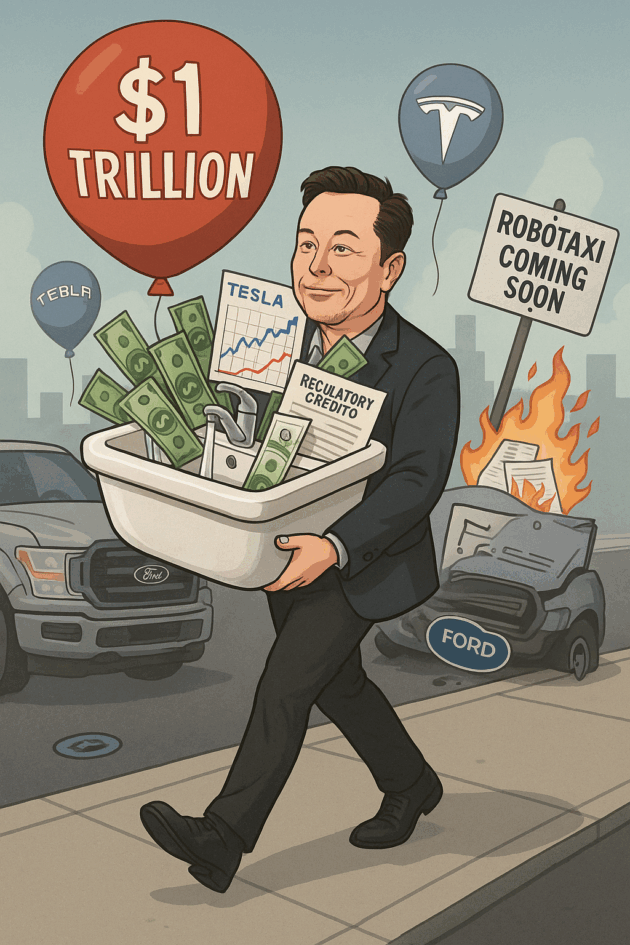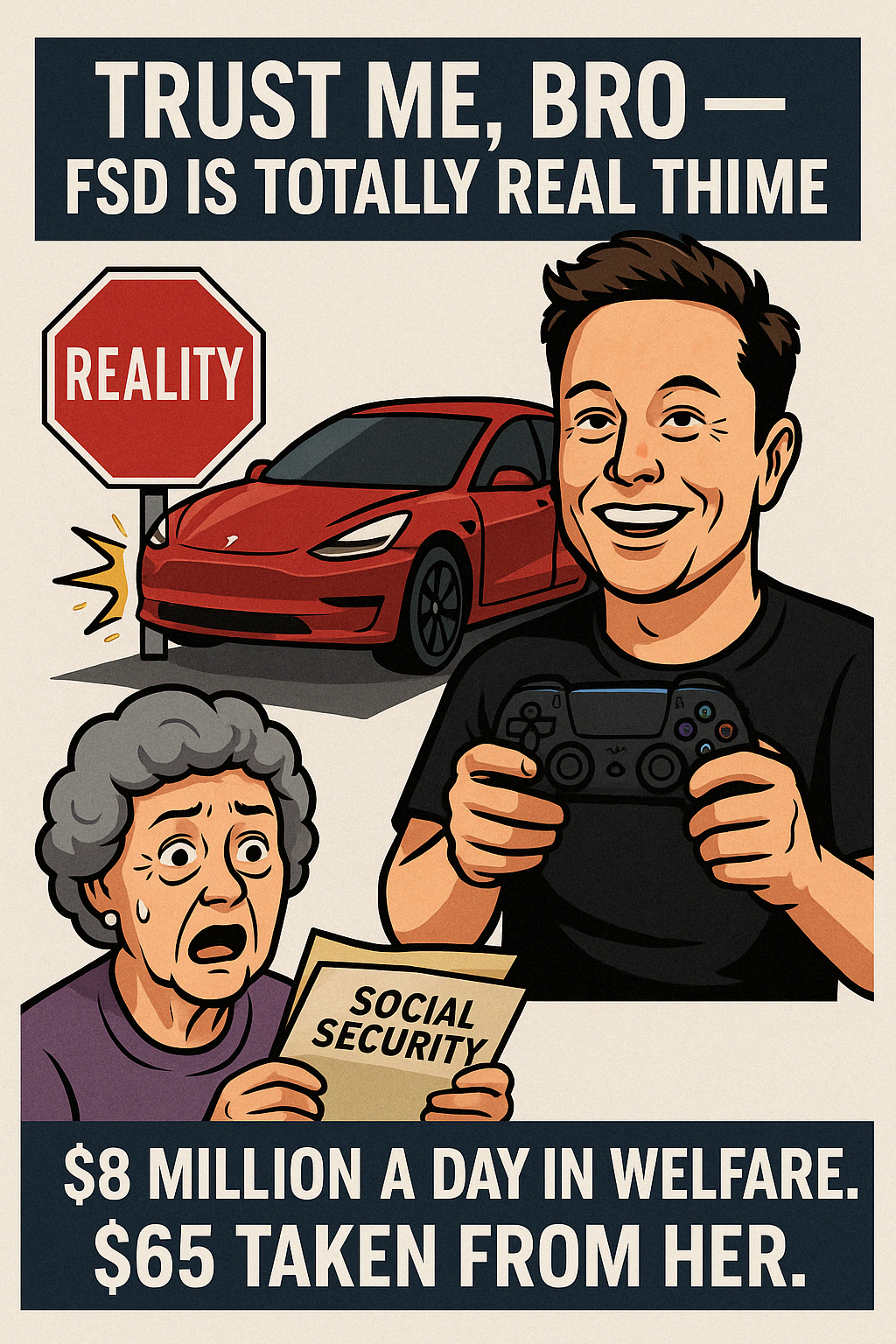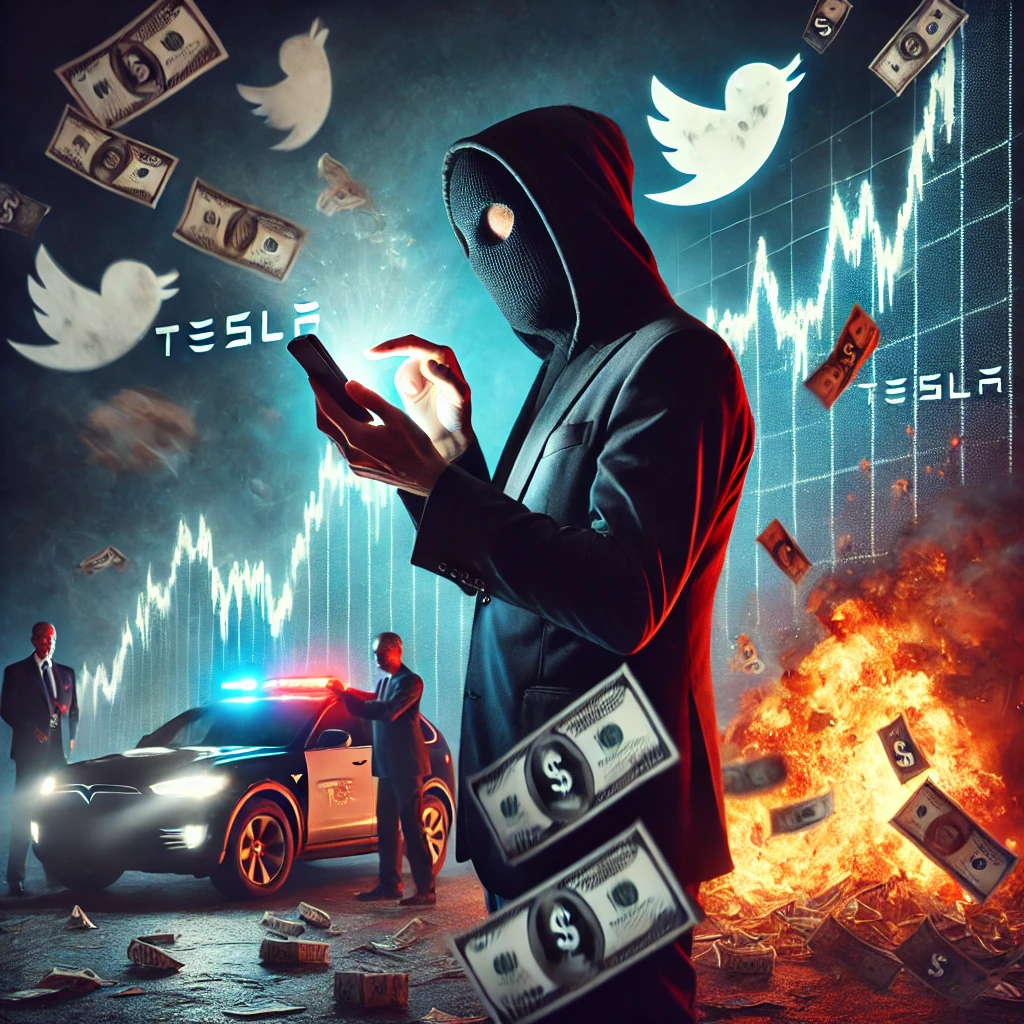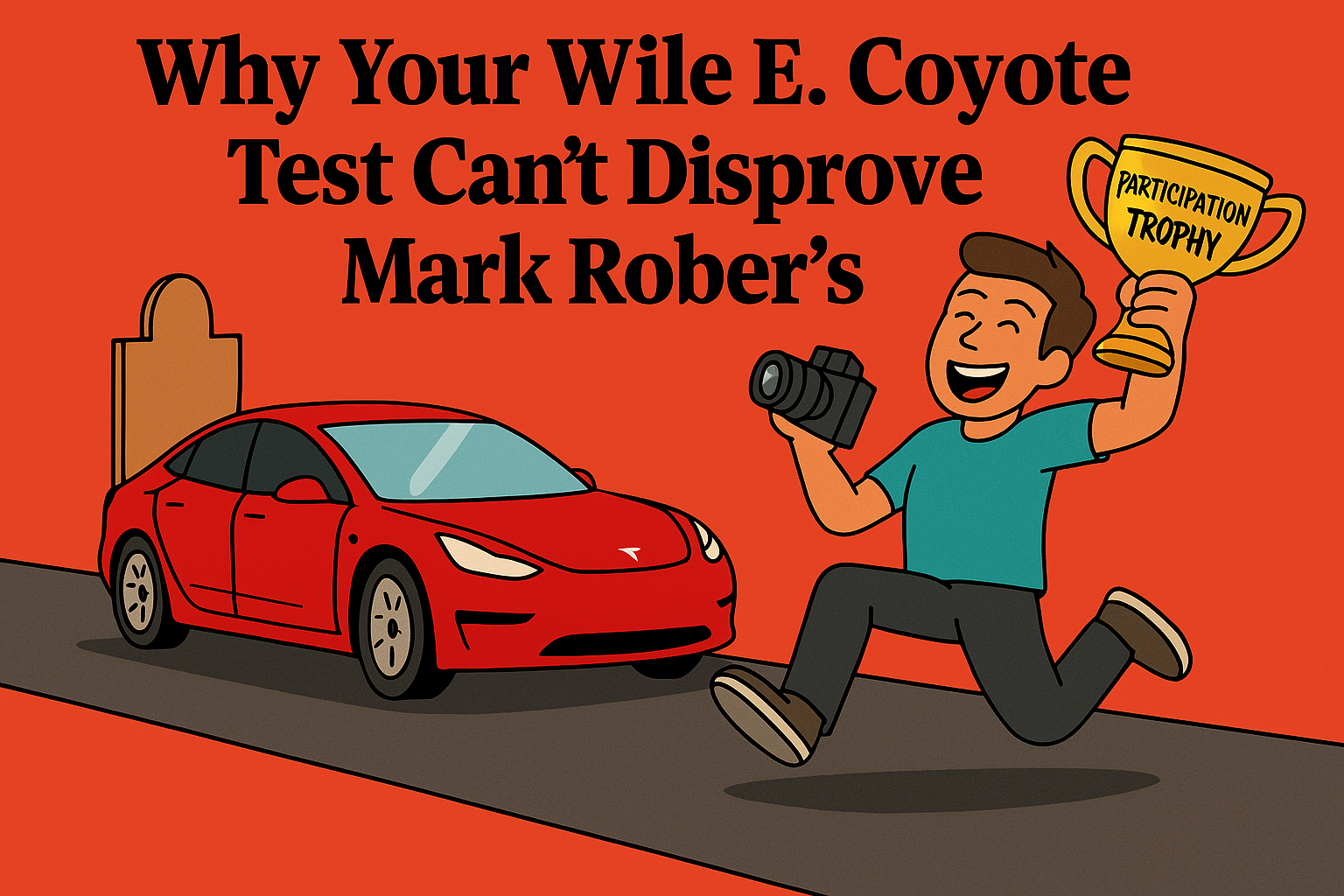
The worse the news is, the more Tesla’s stock goes up.
That’s not a joke. It’s the market behavior of a trillion-dollar cult.
On May 13, 2025, Tesla stock surged nearly 5% — adding over $50 billion in market cap in a single day. That’s more than Ford’s entire company is worth. Ford, which builds over twice as many cars per year and has been doing so for over a century, was valued at roughly $42 billion at the time. Tesla added more than that — with no good news at all.
Because there is no good news.
Tesla’s China sales are declining, and the “China deal” hyped by pro-Musk outlets like Teslarati isn’t a deal at all — tariffs are still 30%. It was reduced from 145% to 30%, sure. But 30% is still a tariff — and China already prefers domestic EVs, many of which cost under $10,000. Why would Chinese consumers pay $50,000+ for an imported Tesla with software that doesn’t work?
Meanwhile, Elon Musk is once again promising a “RoboTaxi” rollout — despite:
- software that still fails public safety tests,
- a regulatory environment that hasn’t approved anything,
- and a history of recalls that confirm it’s not ready.
Tesla would’ve lost money last quarter without EV credits. And yet it’s being treated like a hypergrowth tech company. This is not investing. This is financial delusion with a ticker symbol.
The Math Doesn’t Work — and Never Has
Let’s break it down. Tesla is valued at over $1 trillion. If you divide that by its annual net income — about $15 billion — you get a price-to-earnings ratio (P/E) over 65, even with credits. Strip out those credits and the P/E skyrockets beyond 100. That’s higher than almost any major company on Earth.
To justify that kind of valuation, Tesla would need to:
- sell 15–20 million vehicles per year (more than Toyota),
- maintain premium pricing and high margins, and
- do all this while facing fierce competition and regulation.
Today, Tesla sells about 1.8 million vehicles per year. Not even close.
Compare that to Ford’s valuation of ~$42B, Toyota’s $250B, or BYD’s $80B. Tesla is worth more than all three combined — even though they collectively produce 20x as many vehicles and often don’t need regulatory credits to stay profitable.
So what exactly are you paying for? Delusions of grandeur.
A History of Hype and Nothing Delivered
Tesla isn’t new to vaporware:
- Cybertruck? Recalled almost immediately.
- Solar Roof? Barely exists.
- Optimus Robot? Just a guy in a spandex suit — for real.
- Battery swap stations? Turned out to be a $295 million scam for regulatory credits.
- Moon missions? Still not delivered, despite collecting billions in funding.
If a startup behaved this way, they’d be bankrupt or under investigation. But when Elon Musk does it, investors call it “visionary.” At some point, you have to ask: is the vision just a series of moving goalposts to justify stock-based compensation and insider selling?
The Cult of Elon — and the Human Cost
Sites like TeslaEmployeesAgainstElon.com have emerged, created by real employees who were fired or silenced for speaking up. One engineer who contributed to that site said plainly: “We are not allowed to speak the truth here.”
Tesla’s valuation depends not on cars, or software, or infrastructure — it depends on Musk’s ability to keep the illusion alive. That’s why headlines about him buying Twitter, running multiple AI startups, or meddling in politics are always followed by bizarre stock rallies. It’s myth maintenance.
How It All Ends
This can’t go on forever.
Eventually:
- RoboTaxi will fail to get approval, or won’t work in the real world.
- China will reject Tesla — not just at the consumer level, but at the policy level.
- EV credits will dry up, especially as more legacy automakers hit compliance.
- Interest rates and debt costs will matter again.
And when that happens, all that’s left is the math — and the math doesn’t lie.
Discover more from
Subscribe to get the latest posts sent to your email.




